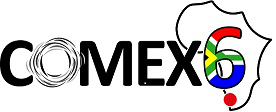Speaker
Description
B(E2: 2+→0+) values of neutron-rich even-even carbon isotopes have been
reported up to $^{20}$C and do not only provide important information on the
evolution of the underlying structural mechanism towards the drip line but also
provide critical constraints for theoretical models. The B(E2: 2+→0+) value in
$^{14}$C can be indispensable to advance our understanding of the Carbon
isotopic chain. However, the experimentally determined B(E2: 2+→0+) value
for $^{14}$C exhibits persistent inconsistencies with that obtained from theoretical
models, including the no-core shell model. The safe Coulomb excitation
experiment of $^{14}$C at Florida State University took advantage of the unique
beam capabilities and the availability of high-efficiency large volume LaBr3
detectors and the S3 double sided silicon strip detector. The preliminary
results from the experiment to attempt the Coulomb excitation of $^{14}$C will be
presented.
This work was supported by the National Research Foundation of South
Africa under grant number 105205 and by the U.S. DOE by LLNL under
Contract DE-AC52-07NA27344.

